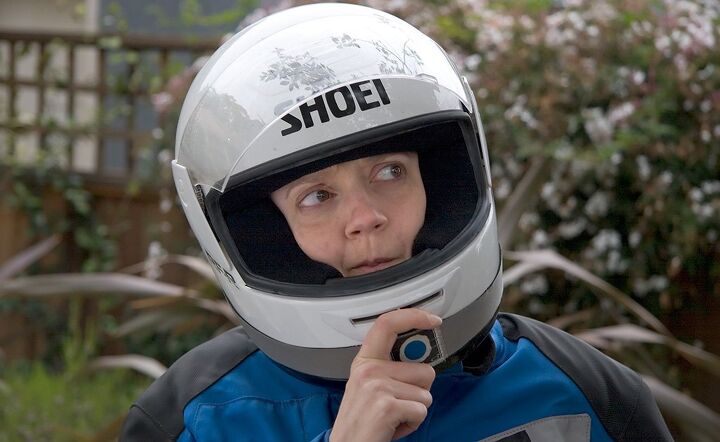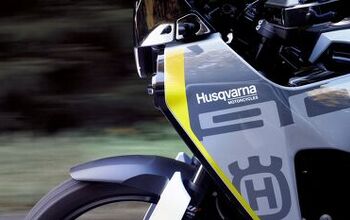Top 10 Things To Check When Your Bike Won't Start

You know the old saying: There are motorcyclists who have gone down, motorcyclists who are going down, and motorcyclists who are going to go down again – down to their garage only to find that their bike won’t start. Even with today’s improved batteries, if it hasn’t happened to you yet, it will. So, before you pull out your phone and call Uber or your buddy with a pickup truck (You have one of those, don’t you? Every rider should have a buddy with a pickup truck.), check these 10 common causes to assist you in troubleshooting your no-go woes. After all, wouldn’t you rather ride than spend the time explaining to your friend why picking you and your bike up is actually more fun than the date that had to be canceled in order to retrieve you.
10. Dead/Weak Battery
We’ll get the most obvious one out of the way first. The usual signs of a dead battery are extremely dim running lights that dim even more or go out completely when you thumb the starter. A battery that will no longer hold a charge is characterized by an inability to crank the starter for more than an instant. If your bike starts, lucky you. If not, well there’s always jumper cables. The other sign of a dead battery is the Click of Death. There’s just enough energy left in the cells to trigger the starter solenoid to send out a distress signal: dot dot dot, dash dash dash, dot dot dot.
9. Clogged Petcock
Yes, your petcock* should have a screen on its fuel intakes to keep it from clogging, but rust particles from your tank’s innards aren’t the only thing that can clog the petcock’s internal passageways. Corrosion within the valve itself can bung up the works. Try tapping the petcock with a screwdriver (or a small rock if you’re stranded in a parking lot) a few times to see if you can jostle the gunk loose. Hopefully, you’ve got a filter inline before the carbs themselves are clogged. Also, the vacuum line from the engine to vacuum controlled petcocks can dry rot, crack, and leak, keeping the engine’s suction from opening the valve. A little electrical tape over the crack might get you home in a pinch.
*Get your mind out of the gutter and back into the fuel system where it belongs. A petcock is a fuel control valve that turns the flow of gas off, on, and to the reserve position.
8. Clutch Switch
Some bikes require that you pull in the clutch lever, even if the bike is in neutral, in order to get the starter motor to spin. If the starter won’t crank – not even click – at all and the instrument lights are on (indicating that you’ve got at least some power), try squeezing and releasing the clutch lever a few times to see if you can make the switch happy. Also, make sure you’re pulling the lever all the way to the grip. If that still doesn’t work, you can go all MacGyver on it by bypassing the clutch switch and jumping the leads with a staple, fooling the bike into thinking the clutch is pulled in.
7. Transmission in Gear
Furthering the clutch lever switch issue, make sure your transmission is in neutral. You may be pulling the clutch in, but a faulty switch may be telling the starter motor that you’re not. Bikes that don’t require that the lever always be pulled in may be made to start with the transmission in neutral.
6. Sidestand Down
You’d be surprised how many times riders find – after double-checking their preflight list – the non-starting problem was caused by having the sidestand down. Go ahead. Fold it up. Since the bike won’t start, it certainly won’t hurt anything. Sometimes what happens is that even when the sidestand is all the way up, the little plunger switch that tells the ignition it is, is stuck. Time to get on your hands and knees with a toothbrush and some WD-40.
5. Something Blocking Intake or Muffler Exit
In the tall tales of stored motorcycles, there exists a whole category of stories about owners who try to start their motorcycles only to discover that someone – usually of the rodent variety – has taken up residence in their airbox or muffler. These squatters usually decide to do a little remodeling or move in a bunch of furniture to their home, thereby restricting the airflow.
Then again, you may just have pranksters for neighbors. Check your muffler exit for a potato.
4. No Fuel
File this one under, Duh. Just like when an object can often not be where your are certain you left it, check to see if there is fuel in the tank. Shake your bike back-and-forth while listening for the telltale slosh. Although it was always funny when Wile E. Coyote checked the tank with a match, use your smart phone’s flashlight instead. Once you’ve made sure you have fuel, check to see if the fuel pump is running on bikes that have them. Also, on carbureted bikes, open the float bowl drain to see if any of the gasoline from the tank is making it to the carburetors.
3. Loose Plug Wire
So, your engine is cranking and cranking but not starting. You’ve checked for fuel. What else can you try? The problem with electrical issues is that they’re hard to see as you troubleshoot. So, unplugging and replugging connectors becomes necessary. So, if you can reach the plugs on your non-starting motorcycle, why not check to make sure they’re properly seated by…well, you know.
2. Engine Cutoff Switch
Some riders almost never use their kill switch to shut down the engine but use the ignition key instead. However, the engine cutoff switch can be turned off by bumping it in the right way or maybe having a kid walk by and play with it. Either way, many riders have suffered the embarrassment of making their riding buddies wait while they struggle to figure out why their bike won’t start – all the while with the answer right under their nose.
1. Ride Your Bike More Often
Really? We have to say this? If your bike won’t start, unless you have an untreated mechanical or electrical problem, the solution is to get out and ride your dang bike more! Although no science has been able to prove it, experience says that frequently adding electrons to your battery via vigorous riding will deliver a healthier electrical system. Just like eating nothing but fast food will kill you, a motorcycle that receives its only nutrition from a smart charger ultimately just wants to sleep in the sun, like a neutered cat. Give it the stimulation it needs with daily, fun rides.

Like most of the best happenings in his life, Evans stumbled into his motojournalism career. While on his way to a planned life in academia, he applied for a job at a motorcycle magazine, thinking he’d get the opportunity to write some freelance articles. Instead, he was offered a full-time job in which he discovered he could actually get paid to ride other people’s motorcycles – and he’s never looked back. Over the 25 years he’s been in the motorcycle industry, Evans has written two books, 101 Sportbike Performance Projects and How to Modify Your Metric Cruiser, and has ridden just about every production motorcycle manufactured. Evans has a deep love of motorcycles and believes they are a force for good in the world.
More by Evans Brasfield






































Comments
Join the conversation
This list would have been better if the points were in order of likelihood.
1.Kill switch by starter button? (oops)
Battery charge and connections (if the bike's lighting is dead or dims when starter is pushed)
2.Clutch pulled in? (unless you can start in neutral with clutch lever out)
3.Kickstand up? (unless you can start in neutral with it down)
4.Bike in gear? (unless you can start with kickstand up and clutch pulled)
5.Got fuel? (if it cranks like mad but never fires)
6.Fuel lines, carb/injectors, and filter? (might be pinched or clogged)
7.Spark plugs and connections? (cylinders flooded? Plugs fouled?)
8.Intake and exhaust? (I've heard stories of rat nests in airboxes)
9.Clutch, kickstand kill switches, and starter button? (might have a loose wire or other damage)
10.Keyed Ignition switch? (might be dirty, corroded, or have a damaged wire)
Chasing electrical gremlins is the worst.
My 20-year-old KTM Duke wouldn't start last week; no spark. Got out the multimeter, checked all the usual suspects for continuity and spec resistance; still no spark. Put everything back together after pulling the ignition cover to check the pulser and stator (which were in spec); Got Spark! Figured one of the connectors must have been a little oxidized, even though they looked okay, and simply unplugging/plugging yielded continuity.
Put the gas tank back on (which has to be removed to check the plug and ignition coil) -- won't start. Remove tank again; no spark again.
I'm gonna have to check continuity in all the ignition circuits' wiring; it almost has to be a bad connector or broken lead somewhere.